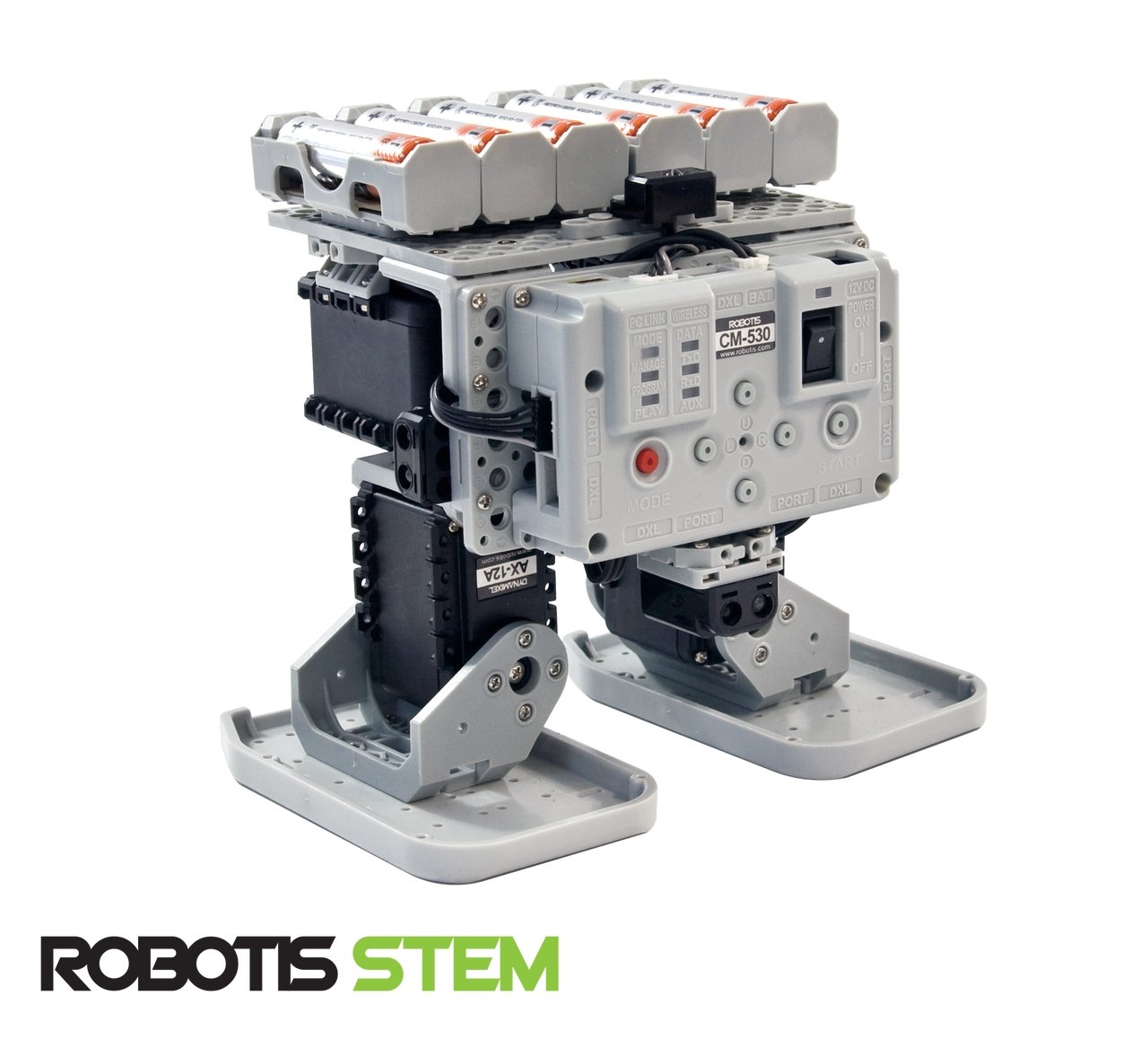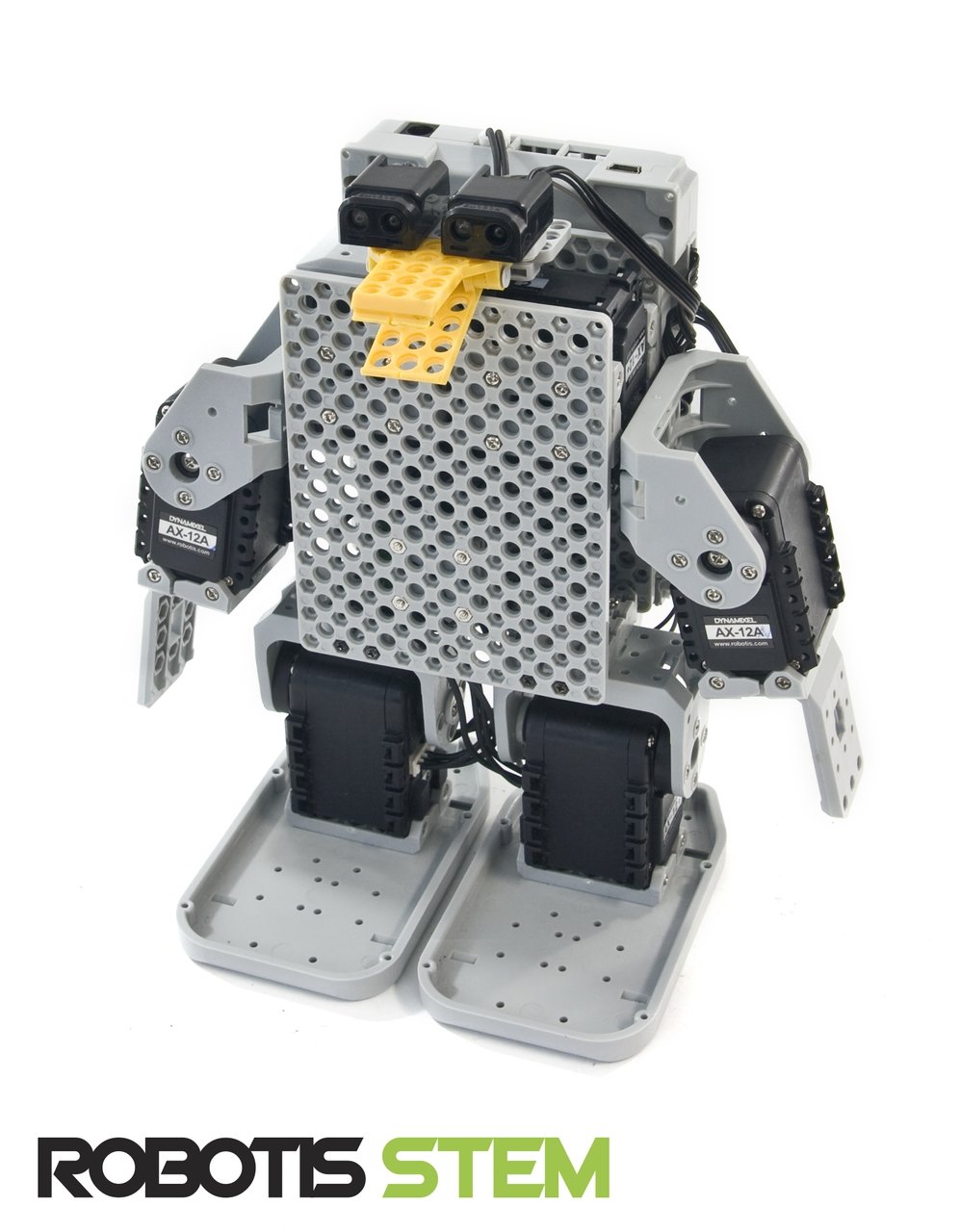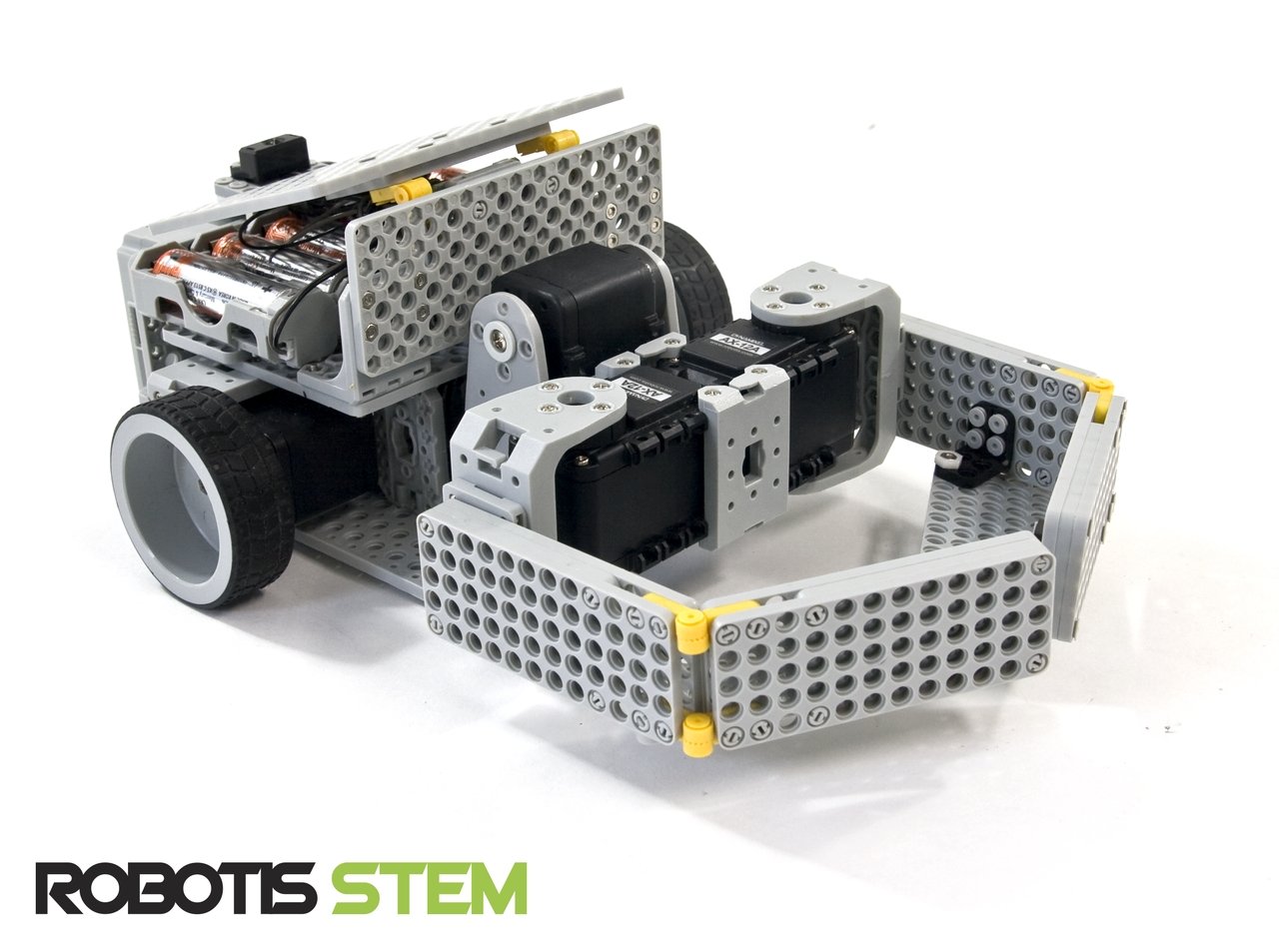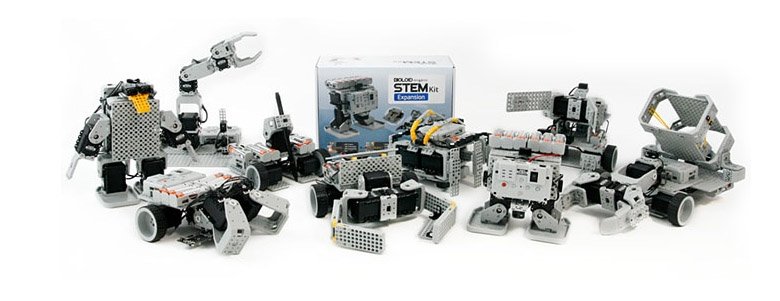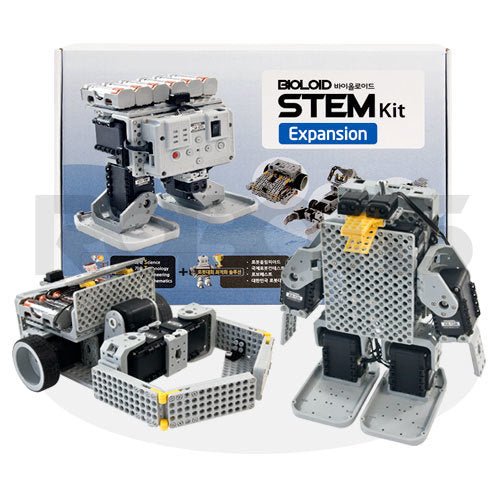


* This is an expansion kit and must be purchased with the ROBOTIS BIOLOID STEM Standard Kit.
The BIOLOID STEM Expansion consists of 9 example robots and 27 weeks of educational material. STEM Expansion focuses on the advanced scientific principles such as Principles of the Conservation of Energy, Bi-Pedal Motion, Axial symmetry, Voice Recognition Technology, and more. You are guided in learning and solving various problems on your own.

*You MUST purchase ROBOTIS STEM LEVEL 1 in order to use ROBOTIS STEM Level 2 as major components of Level 1 are used in Level 2.
You can build up to (9) example robots with the ROBOTIS STEM Level 2 kit:

The kit includes fully-colored workbooks that provide detailed assembly instructions. Alternatively, you can download the R+ Design program for a preview of robot assembly and structure. Zoom in/out or rotate the 3D model to view the robot from any angle.
|
|
For assembly tips, please check out our Tutorial Videos! (Coming Soon!)
Programming the ROBOTIS STEM Level 2 Examples
|
The ROBOTIS STEM Level 2 can be programmed using RoboPlus. The kit comes with a download CD but you can also download it here.
For programming ROBOTIS STEM Level 2, you will need RoboPlus Task and RoboPlus Motion, which are included in the the RoboPlus suite. Alternatively, you can download the new version of RoboPlus Task, R+ Task 2.0 and RoboPlus Motion, R+ Motion 2.0 here. |
Download Example Programs
|
Chapter 8: Scribbler
|
|
|
Chapter 9: Transporter
|
|
|
Chapter 10: Probing Car
|
|
|
Chapter 11: Beetle Gripper
|
|
|
Chapter 12: Robot Arm
|
|
|
Chapter 13: Walking Droid
|
|
|
|
|
|
Chapter 14: Hexapod
|
|
|
Chapter 15: Penguin
|
|
|
Chapter 16: Cannon Shooter
|
|
*You MUST download the Motion file with the Task code as the Task code calls the Motion file.
Curriculum Guide
The ROBOTIS STEM Level 2 kit comes with (2) workbooks that are fully-illustrated in color. The workbooks span (9) chapters and provide a methodological training process. Each chapter is further divided into (3) sections to cover the following lesson plans:
- Basic Phase: Students learn the scientific and technological principles behind the robot they are about to build. At the end of this chapter, there is a detailed assembly manual.
- Application Phase: Students learn the principles of robot programming and the mathematics of programming.
- Practical Phase: Students apply their knowledge to creatively solve advanced problems and configure their robots for competitions.







